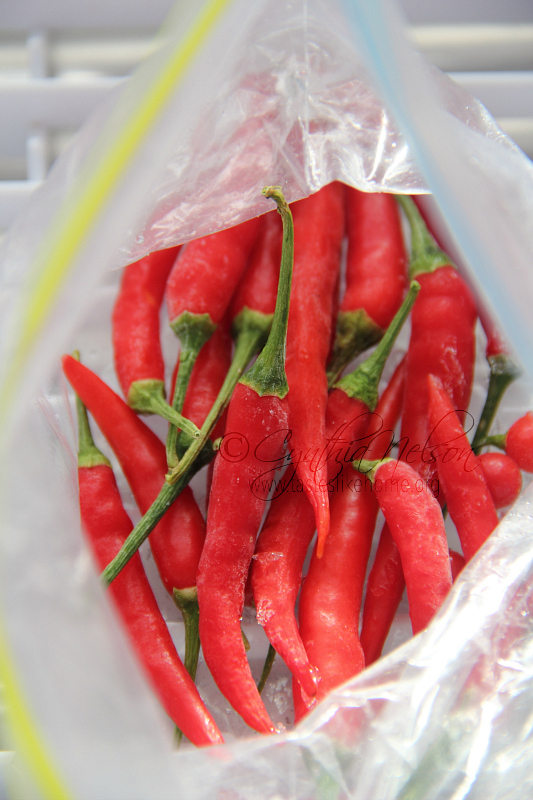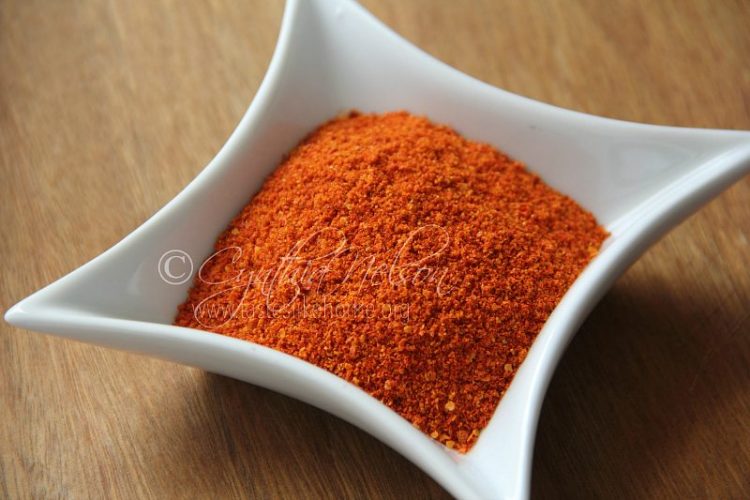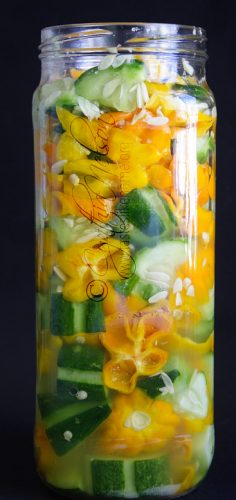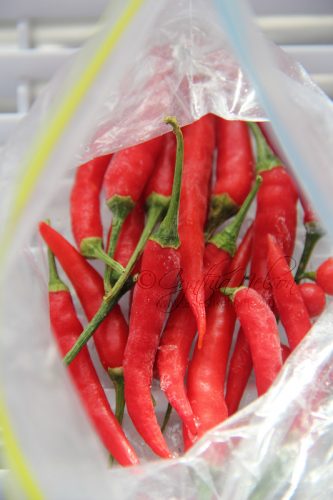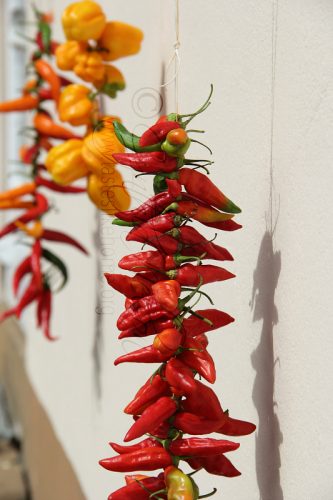This is the third and final part of our heat series on hot peppers.
Nothing lasts forever, and while we get hot peppers all year round due to our tropical climate, there isn’t always the bounty of peppers that we see at this time of the year. We preserve peppers for use throughout the year, but we also do it so that we can use the peppers in various ways for different uses – as a condiment, and as an ingredient to cook with in different forms.
CONDIMENT
As a condiment, peppers can be made into pure pepper sauces – pureed raw with salt and vinegar or lime juice, or rum. Of course many people make their propriety blend of pepper sauce by adding in certain other aromatics such as garlic and fresh herbs. Peppers are also made into hot sauce, which is not to be confused with pepper sauce. Hot sauce is when the peppers are cooked and combined with other ingredients such as tomatoes, onions and herbs, then pureed smooth. Another way hot peppers are made into a condiment is when they are dried and processed as flakes, to be shaken over a variety of foods such as pizza, eggs, salads or light pickles such as cucumbers.
When making pepper sauce: if using lime juice, cure at room temperature for a week and then continue to cure and store in the refrigerator. If using vinegar, cure and store at room temperature.
There are other forms of pepper sauce that fall into the category of a pickle as the ingredients are left to cure for at least two weeks in a brine made of distilled vinegar, water and salt; whole spices can be added. In all of these instances, the peppers are not pureed but are cut into large pieces, sometimes left whole or lightly crushed. The peppers are mixed with fruits in their un-ripened state such as green mangoes, golden apple, and dounce to name a few. Carrots, cucumbers, karaila, onions and boiled limes make great additions to this type of pickled “pepper sauce”. In Barbados, peppers such as bird peppers are left whole in a brine of salt and vinegar and are referred to as corned peppers.
“Pepper sauce” pickles can be cured and stored at room temperature because of the use of vinegar, which kills off bacteria. Always be guided by a tested recipe and use the prescribed strength and variety of vinegar.
INGREDIENT
As an ingredient, hot peppers can be applied to cooking in various forms – fresh, frozen, dried, flaked, or powdered. Most recipes will specify the form of pepper to be used. Let me quickly add here that strictly speaking, if a recipe calls for fresh hot peppers, minced or whole, frozen peppers can be used. Freezing the peppers is merely to give them a longer shelf life. There is a school of thought that suggests that the peppers be blanched – cooked lightly and quickly in boiling water and then plunged into ice-cold water to stop the cooking process before freezing – I find this to be completely unnecessary. For years, I have simply stored my fresh hot peppers by tossing them into a freezer zip bag, and they stay exceptionally well for months.
There is no need to defrost the peppers before use. Frozen peppers are easy to slice and chop. They can also be dropped whole into the pot.
Dried peppers are simply peppers left whole or halved and sun dried until wrinkled and crisp. In this form, once stored properly, the peppers can last for a very looong time. The best way to store the dried hot peppers is preferably in an airtight glass jar away from heat. Or, simply put them into a zip bag or airtight container and toss them into the refrigerator or freezer. Storing the dried peppers at room temperature in plastic bags can cause them to get insects if they are not used in 4 to 6 months time.
In the dried form, the peppers can be ground to pastes with other ingredients or they can be crushed-crumbled and added to a recipe, or fried in oil with other ingredients such as spices to season and finish a dish. Dried hot peppers can be dropped in to soups and stews too to rehydrate and infuse the dish with heat. The degree of heat would depend on the variety of pepper and how much has been added to the pot.
To dry peppers – rinse with tap water and air dry. Leave whole or cut into half, spread on a flat tin metal pan such as a baking sheet or string up and place in the sun for a few days until the peppers have shrunk, are wrinkled, dry and crisp. Let cool to room temperature before storing.
The dried pepper can take two other forms – flaked and powdered. Pepper flakes, are used both as a condiment and as an ingredient in cooking. The flakes when adding to cooking bring controlled heat and a gentleness that warms the dish. Added at the start of cooking, the flakes contribute to the overall warmth of the dish but added at the end, they are meant to give the dish a certain kick or bite so to speak. Always be guided by the recipe when using pepper flakes, as there is a reason and purpose for the addition.
To make pepper flakes – add dried peppers to a food processor and pulse to reduce to flakes. Cool to room temperature before storing.
Dried and ground to a powder, the pepper then becomes known as chili powder. All chili powders are not created equal. There are varying heat levels depending on the type of pepper used to make the powder. Some chili powders are a combination of peppers and then there are powders made up of the hot peppers mixed with ground spices. If you make your own then you know what the chili powder is made of but if you are buying chili powder, be sure to read the package label.
I make my own chili powder but I also buy chili powder in a large quantity (like 1 pound) as I use it often in a variety of ways – for homemade spice blends and wet pastes. I also use it for curries, stews, and stir-fries. There are times when I want to use chili powder more for the colour it will bring to a dish rather than the heat, therefore, I also make chili powder with sundried red sweet peppers (think paprika). Whenever I travel, I stock up on Kashmiri chili powder – it is made from a mild pepper and imparts more colour than heat to dishes.
To make chili powder – working in batches, grind the dried peppers using a spice grinder, coffee grinder or another type of equipment that pulverizes.
